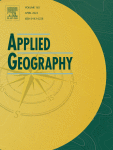Subscribe to keep up to date with the latest research, resources, news and events from The Deck.
You can also sign up to Q Shelter’s monthly newsletter, Home Matters.

Ali Soltani, Chyi Lin Lee
Traditional linear models often struggle to capture regional housing markets’ complex, non-linear dynamics. This study addresses this gap by developing and applying advanced machine learning algorithms to unlock unique insights into South Australian housing price behavior.
Leveraging a comprehensive dataset of over 10,000 regional house sales from 2010 to 2021, we explore the non-linear relationships between housing prices and microeconomic factors (e.g., house size, land area, building quality) and socioeconomic characteristics (e.g., proximity to amenities and income levels). Our analysis employs a multi-step approach, including feature engineering, spatial data integration, correlation tests, multilevel modeling, and non-linear machine learning algorithms including Decision Tree, Random Forest, Gradient-Boosted Tree, and Artificial Neural Network.
The key finding is that machine learning models outperform traditional econometric models in predicting regional housing prices, with higher accuracy and greater goodness of fit. Furthermore, we identify specific non-linear relationships, such as the increasing marginal impact of proximity to the sea on house prices as distance decreases. These findings offer valuable insights for policymakers, real estate professionals, and stakeholders, informing regional planning, infrastructure provision, and economic development strategies. This study sheds light on the complex dynamics of South Australian housing markets and lays the foundation for further research.